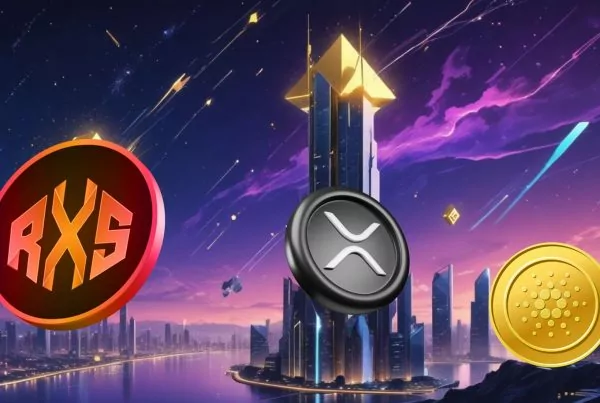
The importance and popularity that active trading used to hold has transitioned over to passive income strategies. The eternal debate of yield farming vs. staking is one example of such strategies.
Holding one’s digital assets safe and hoping their value increases is no longer as attractive as it used to be. Nowadays, people usually look to the markets for opportunities that would allow them to put their crypto to good (and lucrative) use. That’s where staking vs. yield farming comes in — both make it possible to earn from your crypto passively, but what’s the difference? Join us below as we explain.
What is Yield Farming?
At first glance, the origin of the term “yield farming” may sound strange. “Yield” is a measure of the return to the holder on a security/crypto, while “farming” refers to the process of generating that cryptocurrency. Therefore, yield farming is basically a new way to “grow” your own cryptocurrency (much like farmers grow food).
More specifically, this process means individuals lend their crypto assets to DeFi platforms, which lock them in liquidity pools. While your assets are locked, they actually provide liquidity to DeFi protocols by making it possible to trade, borrow, and lend. In return for using your crypto assets to facilitate these operations, the platform earns fees, which it then pays back to investors depending on their share in the overall liquidity pool.
However, this is where it gets a bit more technical. Liquidity pools are necessary to ensure AMMs (Automated Market Makers) can function. Why are AMMs important? Rather than using traditional sellers and buyers, AMMs allow automated, permissionless trading thanks to liquidity pools.
On the other end of the spectrum, liquidity providers get LP (Liquidity Provider) tokens that track individual contributions to the liquidity pool. Therefore, the rewards are higher for liquidity providers who contribute more capital to the pool and vice versa.
Yield Farming Advantages
If you’re looking to become a yield farmer, one way to go about it is to lend your digital assets through a DApp. When doing so, the DApp lends your coins to borrowers, allowing you to earn payment in the form of new coins. However, keep in mind that the interest rates depend on the demand for digital assets, and also that your earned interest accrues every day.
In other words, it’s not as if it’s mandatory to merely keep your crypto assets in a wallet, especially when you consider that you can potentially earn more through yield farming. Revenue streams for yield farmers range from token rewards and transaction fees to price appreciation and interest. Additionally, this strategy also helps with affordability, since it’s less costly than mining (you don’t have to invest in costly mining equipment or pay for electricity used in the mining process).
Moreover, if you’re looking into more sophisticated yield farming strategies, you can consider smart contracts or depositing different tokens on a crypto platform. But most of all, yield farming protocols are usually focused on allowing farmers to maximize returns while simultaneously taking security and liquidity into account.
What is Staking?
Staking is the more traditional of the two strategies. If you’re looking into staking, you’ll need to commit your crypto assets to a network (such as Ethereum, for example), and participate in validating its transactions. The term “staking” is behind the Proof of Stake (PoS) consensus mechanism that numerous blockchain networks use. Basically, this strategy enables you to earn interest while you’re waiting for the release of block rewards.
PoS vs. PoW
Most astute investors and individuals who are still new to the industry wonder why PoS exists. After all, Bitcoin uses the Proof of Work (PoW) consensus mechanism, so what’s the point of having another one? The answer is that PoS blockchains are much less resource-intensive than PoW ones. PoW networks need massive computing power for validating new blocks.
On the other hand, PoS blockchains have nodes — servers that process and verify transactions, and also serve as checkpoints. Users who set up these nodes are commonly referred to as “validators.” These individuals are selected randomly to sign blocks and are rewarded for their role.
So, how does staking as a crypto strategy factor into everything mentioned above? While it’s prudent to understand the technicalities involved in how PoS works and setting up a node, it is not a requirement. Thanks to technology in the form of crypto exchanges, you can simply send your crypto assets to an exchange, after which the network will handle the node setup and validation.
Additionally, the more stakes there are on the blockchain network, the more decentralized and safer it will be against attacks. Overall, it’s a convenient system: keeping the network safe and in working order means that stakers receive rewards. These rewards typically offer higher returns compared to investing in other financial markets. Regardless, remember that there are also risks associated with staking, since networks’ stability may fluctuate over time.
Difference Between Staking and Yield Farming
The differences between staking and yield farming include the following:
- Safety
- Fees related to transactions
- Lock-in periods
- Profitability
- Level of complexity
Safety
Hacking is always a risk in all things online, including crypto. Susceptibility to hackers is higher with yield farming that relies on more recent DeFi protocols. Additionally, if there are flaws in the programming of the smart contract, this risk increases even more.
Generally speaking, staking is safer than yield farming because stakers actively participate in the strict consensus process of the underlying blockchain. Therefore, shady individuals typically lose their staked funds if they’re caught attempting to trick the system.
Fees Related to Transactions
Gas costs are an inherent (and significant) concern for yield farmers. On the one hand, yield farmers can switch liquidity pools at their leisure, but on the other, they also must pay transaction fees every time they do so. Considering these costs is critical even if you expect a higher return on another platform.
With staking, you don’t need to solve complex math problems like in a PoW blockchain network. Consequently, the upfront staking and ongoing maintenance costs are lower when staking.
Lock-In Periods
When looking into yield farming vs. staking, the winning strategy for liquidity-seeking investors may seem evident at first glance. Why? It seems straightforward: locking in your funds for a more extended period of time typically leads to higher returns (or APY) from staking.
However, there’s also the fact that yield farming does not require investors to lock in their funds.
Profitability
The relationship between risk and reward is simple to understand: riskier investments usually offer higher returns, and vice versa. Therefore, the higher your returns, the more funds you have to reinvest. The APY (Annual Percentage Yield) is a traditional method for measuring returns. Conventional staking on exchanges typically offers steadier APY returns than yield farming.
Case in point, staking rewards usually range from 5% to 14%. On the other hand, yield farmers can generate massive profits by adopting a new strategy or project early in the process, allowing their returns to go as high as 1000%.
Level of Complexity
The staking process and strategy is easier compared to yield farming. When looking at passive income, staking means that investors simply choose the staking pool and lock in their assets.
Conversely, yield farming is usually more complex because investors have to choose which tokens they want to lend and on which platforms. Down the line, there’s also the possibility that they will continue switching tokens or platforms.
Periodically switching between different yield farming pools may increase your APY, but there’s also the matter of paying additional gas fees in the process. Overall, yield farming is more complex compared to staking, but it may result in more lucrative returns if you possess the knowledge, time, and resources you’re willing to devote to this strategy.
Start Earning Passive Income Today
Investors have numerous opportunities when they step into the crypto world. Knowing the factors and risks that can influence staking gives investors an advantage in designing yield-based strategies.
CEX.IO’s products allow users to earn staking rewards of between 2.6% and 23% on a variety of coins without lock-up periods. CEX.IO’s Staking product — including the straightforward CEX.IO staking calculator — is low-risk and aligns with the technology’s core principle of inclusivity.
Consequently, users can stake whatever amount is most comfortable for them and allows everyone to reap potential benefits from the growth of the crypto space.



